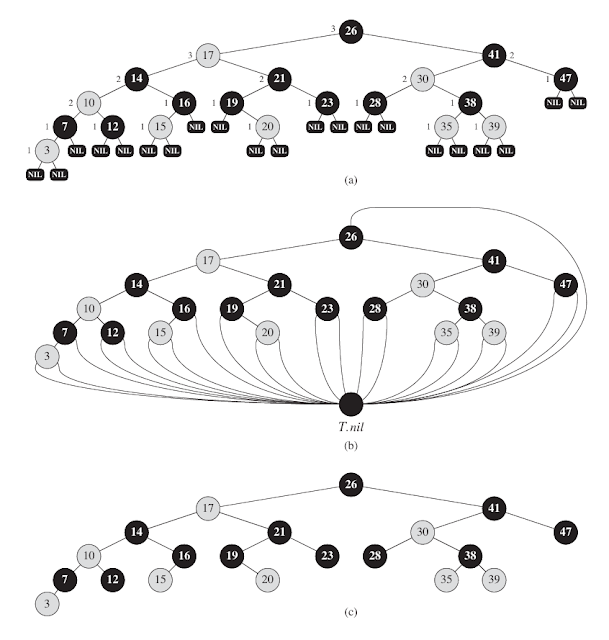Red-Black Trees

Binary Search Trees showed that a binary search tree of height h can support any of the basic dynamic-set operations—such as SEARCH, PREDECESSOR, SUCCESSOR, MINIMUM, MAXIMUM, INSERT, and DELETE—in O(h) time. Thus, the set operations are fast if the height of the search tree is small. If its height is large, however, the set operations may run no faster than with a linked list. Red-black trees are one of many search-tree schemes that are “balanced” in order to guarantee that basic dynamic-set operations take O($log_2n$) time in the worst case. Properties of red-black trees A red-black tree is a binary search tree with one extra bit of storage per node; its color , which can be either RED or BLACK. By constraining the node colors on any simple path from the root to a leaf, red-black trees ensure that no such path is more than twice as long as any other, so that the tree is approximately balanced . Each node of the tree now contains the attribute color , key , left , right , and p . I